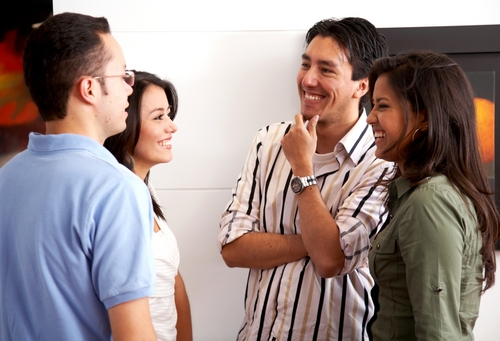?
It is not easy to accurately poll any population, but Latinos in the U.S. appear to pose specific challenges. “There is an art and a science to polling in Latino communities,” says Lourdes Torres, the director of special projects at Univision. There seem to be three major obstacles to effectively polling this fast-growing voting population (66,000 Latinos becoming eligible to vote every month).
First, there's language. Nearly three-quarters of Latino Americans report that they speak either only Spanish or a combination of Spanish and English at home. Simply having a direct translation of the survey questions is not enough, according a recent report by The Pew Research Center. Survey translations must take cultural differences and language nuances into account, so that all respondents will understand the questions in the same way.
For example, the question: “Do you talk about the campaign with people in your family?” would not fare well with a literal translation, says Courtney Kennedy, the director of survey research at Pew. “In the Spanish language, ‘family' tends to include more extended relationships, whereas in the English language when you say family people generally interpret that as immediate family, people that live in your household,” she says. “So you could get a systematically different answer for that type of question for Spanish speaking respondents versus English, just because that concept of family is different,” she says.
Sometimes, language barriers stop potential respondents from even picking up the phone. “If you receive a phone call from a number you don't know, and you don't speak the predominate language of the country, the likelihood of you picking up is relatively low,” explains Jeff Horwitt, the senior vice president of Hart Research, a D.C.-based polling firm, at a recent discussion at Columbia University. Adding to this, for Latino Americans who come from countries such as Cuba or El Salvador where freedom of expression is not a political right, the idea of polling may not feel safe. Adapting to this cultural norm in the United States takes time, Horwitt said.
Another factor is technology. Traditionally, pollsters relied on landlines. It costs more to poll cellphone numbers due to the 1991 Telephone Consumer Protection Act, which prohibits calling cellphones by automatic dialers—an efficient method for pollsters—and so, each number must be dialed manually, adding significantly to the time and cost of conducting a poll.
The proportion of adults who live in cellphone-only households has been steadily rising across the country, but more so in Latino-headed households. As of December 2014, about 45 percent of all American adults lived in cellphone-only households, whereas close to 60 percent of Latino adults did, according to stats from the U.S Department of Health and Human Services. This is due to several factors, including the higher percentage of Millennial Latinos and recent immigrants who tend to have land lines less frequently. “If you're not including the right percentage of cellphone-only respondents, you're not getting the right picture,” says Micah Roberts, the vice president of Public Opinion Strategies, another D.C.-based polling firm.
Luckily, more and more polling companies are realizing that it is imperative to include cellphones in order to conduct an accurate poll, and are paying the extra cost. Pew, for example, updates the percentage of cellphone numbers included annually based on federal cellphone-use data. Currently, for national surveys, three-quarters of their calls are to cellphones, Kennedy said.
Lastly, there's the level of political participation. To have an accurate voter poll, it's important to know if your respondents will actually be voting. “Our participation tends to be lower than African Americans and whites, so sometimes it takes extra calls to find that likely voter,” says Luis Miranda Jr., the managing partner at MirRam Group, a consulting company focused on minority populations. He noted that Americans in general have a low turnout rate, particularly young Americans, but political disenfranchisement is particularly pronounced in the Latino community.
He said that it's important for pollsters to invest in sample lists that include political histories, not just voter registration status. This is a different type of polling than random dialing, but both are used by pollsters. These types of rolls are notoriously inaccurate, but have become much better in recent years, said Torres of Univision. “It has been a little surprising how much disconnect there is to the Latino community by mainstream pollsters, and to the cultural nuances that require different polling approaches,” she says.
Source: Published originally on TheAtlantic.com as Why U.S. Latinos Are Difficult to Poll by Maura Ewing, February 8, 2016.